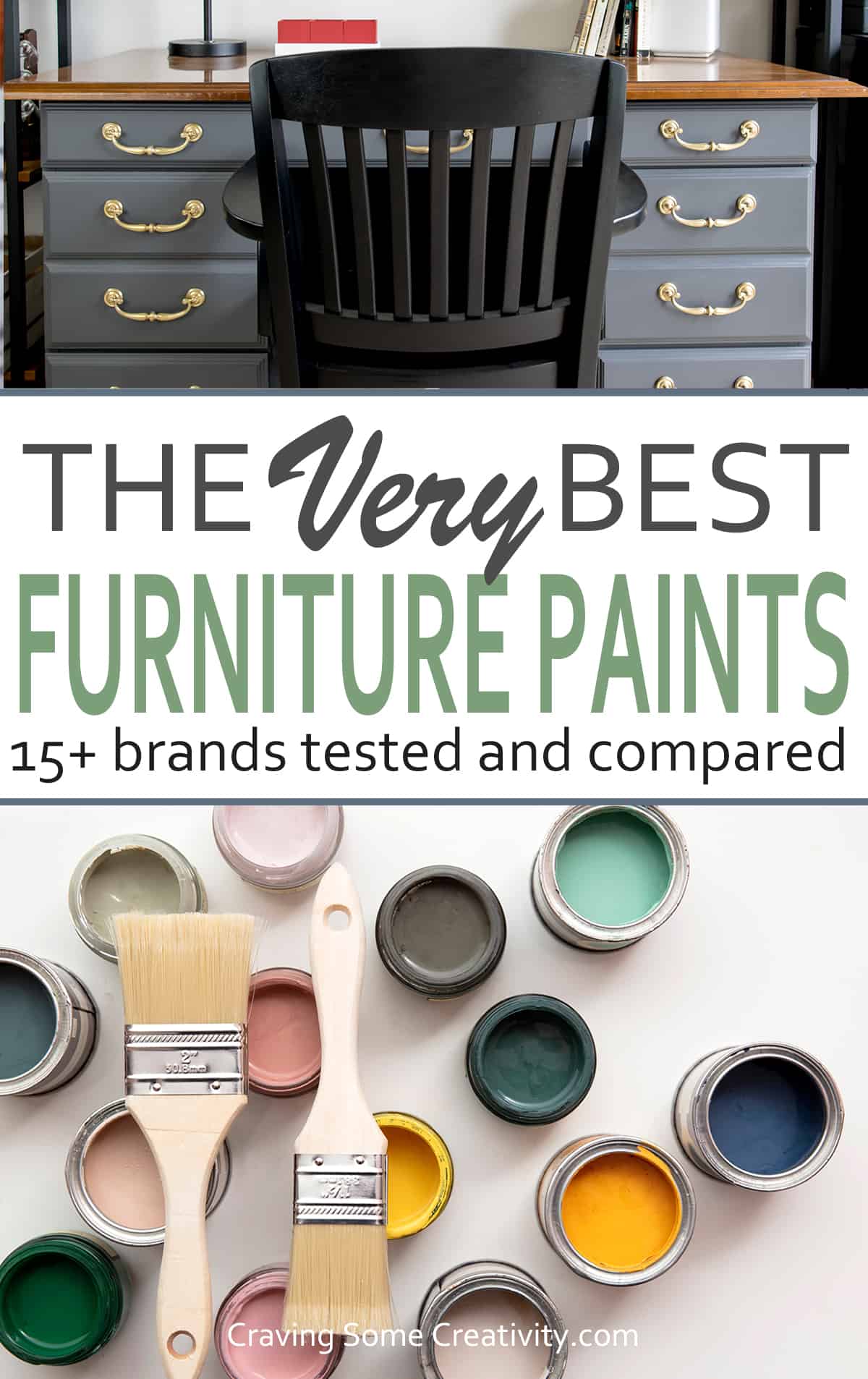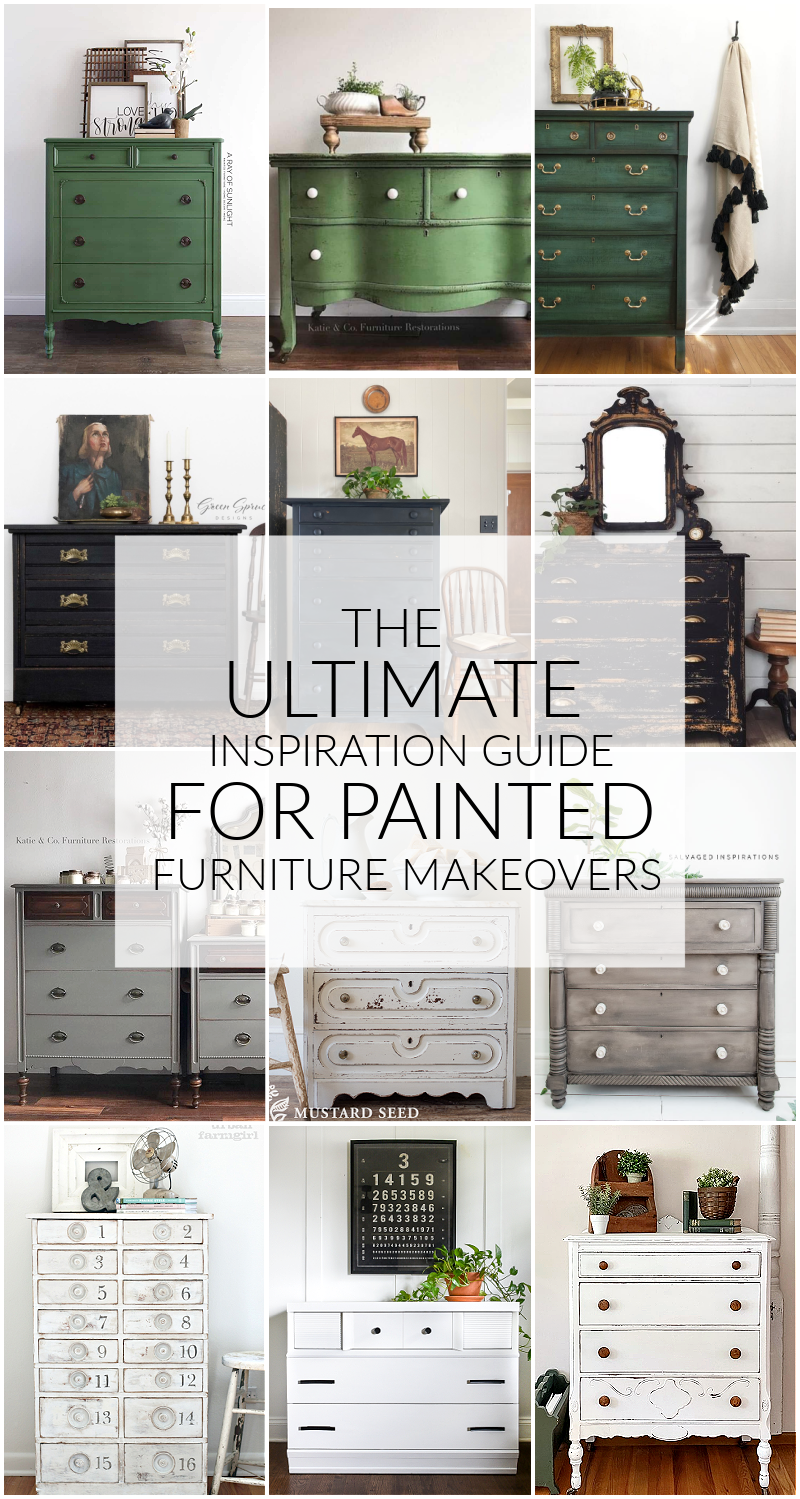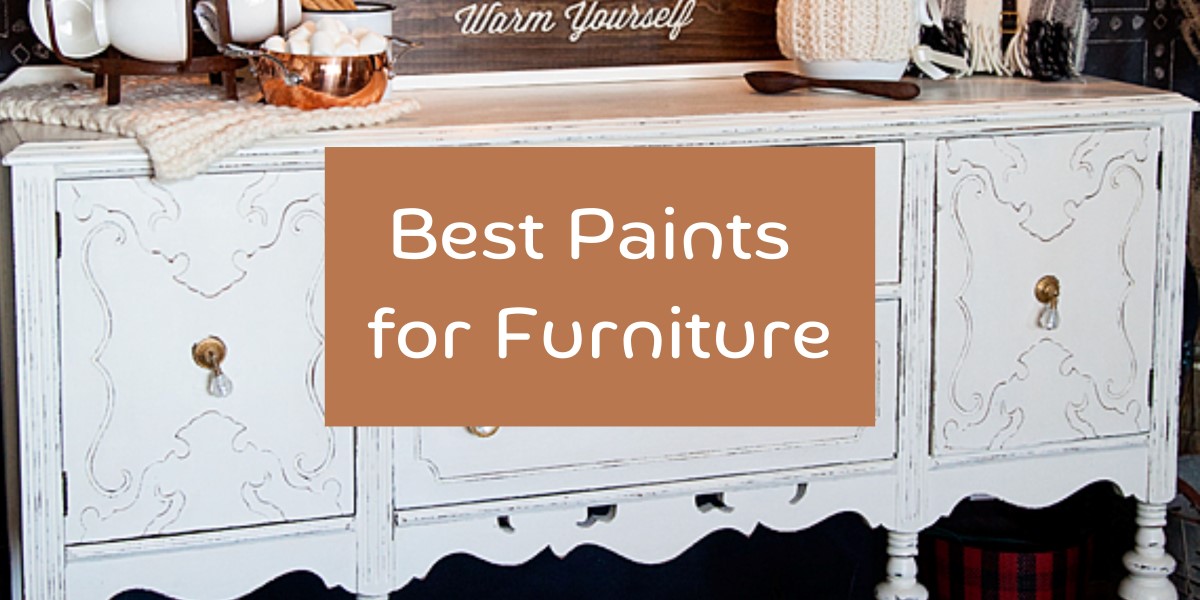Are you wondering what the best furniture paint is for your next DIY project? If so, you're in the right place. Whether you're refurbishing an old dresser, adding a touch of color to a boring bookshelf, or completely transforming a room with a new set of chairs, choosing the right paint can make all the difference.

This image is property of www.cravingsomecreativity.com.
Why Selecting the Right Furniture Paint Matters
Choosing the right kind of paint for your furniture is crucial because it can influence not just the look but also the longevity and durability of your work. The right paint can create a seamless finish, resist everyday wear and tear, and keep your furniture looking fresh longer.
The Benefits
- Durability: The right paint can protect furniture from scratches, stains, and other wear and tear.
- Aesthetic Appeal: Quality paint will offer a smooth and professional look.
- Ease of Cleaning: Better paints are easier to clean, which means your furniture remains looking good.
- Ease of Application: The right paint makes the application process easier, reducing brush strokes and allowing for quicker drying times.
Types of Furniture Paint
Selecting the best paint for your furniture piece starts with understanding the various types available. Each type has its distinct features, making it important to know which one suits your project best.
Chalk Paint
Chalk paint offers a velvety, matte finish and can be used for a distressed look. It adheres to most surfaces without much prep work.
-
Pros:
- Requires minimal prepping.
- Dries quickly.
- Offers an antique or shabby-chic look.
-
Cons:
- Can be more expensive.
- Requires a sealing wax for durability.
Acrylic Paint
Acrylic paint is versatile and water-based, making it easy to clean up. It is suitable for both indoor and outdoor furniture.
-
Pros:
- Dries quickly.
- Easy to clean up with water.
- Available in a wide range of colors.
-
Cons:
- Requires multiple coats for full coverage.
- Not as durable without a sealant.
Latex Paint
Latex paint is another water-based option that is very durable and commonly used for furniture and walls alike.
-
Pros:
- Durable and long-lasting.
- Easy to clean with soap and water.
- Comes in various sheens like matte, eggshell, and gloss.
-
Cons:
- May show brush strokes if not applied carefully.
- Requires a primer for best adhesion.
Milk Paint
Milk paint provides a rustic finish and can easily chip, giving an aged look. It is environment-friendly, being made from milk protein.
-
Pros:
- Non-toxic and eco-friendly.
- Dries quickly.
- Great for achieving an antique look.
-
Cons:
- Requires a bonding agent for non-porous surfaces.
- Less predictable outcome.
Oil-Based Paint
Oil-based paint offers a very hard and durable finish, though it requires more effort to clean up.
-
Pros:
- Extremely durable.
- Provides a smooth finish.
- Resistant to wear and tear.
-
Cons:
- Long drying times.
- Cleaning requires solvents like mineral spirits.
- Has a stronger odor compared to water-based paints.
Considerations for Choosing the Best Furniture Paint
Choosing the right paint involves more than just picking a color. Consider these factors to ensure the best outcome for your project.
Surface Material
Understanding the material of the furniture you plan to paint is crucial. Different materials will react differently to paint types.
| Material | Best Paint Type |
|---|---|
| Wood | Latex, Chalk, Acrylic, Milk |
| Metal | Oil-Based, Acrylic |
| Plastic | Acrylic, Oil-Based |
Desired Finish
What kind of look are you aiming for? If you want a modern, sleek finish, oil-based paints are a good choice. For a vintage or shabby-chic look, chalk or milk paint could be the answer.
Durability
If the furniture will be subject to heavy use, like kitchen cabinets or dining tables, durability is key. Opt for oil-based or latex paints.
Ease of Application
Some paints are easier to work with than others. Chalk and acrylic paints are relatively easy to apply, whereas oil-based paints require more skill and patience.
Environmental Concerns
If you’re conscious about the environment, milk paint is a great non-toxic option. Water-based paints like acrylic and latex are also more eco-friendly compared to oil-based alternatives.
Preparation Tips for Painting Furniture
Before you begin painting, proper preparation is key to achieving a professional finish. A well-prepped surface ensures better paint adhesion and longevity.
Cleaning
First, clean the furniture thoroughly to remove dirt, grease, and grime. Use a mild detergent and warm water for cleaning. Allow it to dry completely before moving on to the next step.
Sanding
Sanding helps to create a smooth surface for the paint to adhere to. Use a medium to fine-grit sandpaper to sand the entire piece. Finish with a fine-grit sandpaper for a smooth final touch.
Priming
Priming is crucial, especially if you’re working with raw wood or metal. A good primer seals the surface, prevents tannin bleed-through (with wood), and provides an even base for your paint.
Use a brush or roller to apply an even coat of primer, and allow it to dry according to the manufacturer's instructions. Sand lightly with fine-grit sandpaper if necessary, and wipe away any dust before you start painting.

This image is property of blogger.googleusercontent.com.
How to Apply Furniture Paint
Taking the proper steps during application will ensure a smooth, professional-looking finish.
Tools You’ll Need
Before you start painting, gather all the necessary tools. Here’s a quick list:
- Paintbrushes of various sizes
- Rollers and trays
- Drop cloths or old newspapers
- Painter's tape
- Sandpaper (Various grits)
- Cleaning cloths
- Primers and paints
Step-by-Step Guide
- Set Up Your Space: Lay out drop cloths to protect your flooring and other items. Ensure the room is well-ventilated.
- Tape and Protect: Use painter's tape to protect areas you don’t want painted, like hinges or glass panels.
- Stir the Paint: Make sure to stir the paint thoroughly to mix any settled pigments.
- Apply the Paint: Use a high-quality brush or roller to apply the paint. Start with a light coat and allow it to dry before applying additional coats. For the best results, apply 2-3 thin coats rather than one thick coat.
- Dry and Sand Between Coats: Allow each coat to dry thoroughly, and lightly sand with fine-grit sandpaper between coats to achieve a smooth finish.
- Final Coat and Finishing: After the final coat, allow the furniture to cure per the paint manufacturer's instructions. This may take several days to a week for oil-based paints.
Sealing and Protecting Your Work
Sealing provides an extra layer of protection, especially for heavily used furniture pieces. Different paints require different sealants.
Types of Sealants
- Wax: Commonly used for chalk paint. Apply it with a brush or cloth and buff for a satin finish.
- Polyurethane: Suitable for latex and acrylic paints. Available in both oil-based and water-based formulas, this provides a durable and long-lasting finish. Be cautious, as oil-based polyurethane can yellow over time.
- Polycrylic: A water-based version that won’t yellow over time. Ideal for light-colored furniture.
Application Tips
- Clean the Surface: Wipe away any dust or lint before sealing.
- Apply Evenly: Use a brush or foam applicator for an even coat. Apply thin, even layers to avoid drips or brush marks.
- Follow Drying Instructions: Allow each layer to dry completely before applying the next. Lightly sand between layers if needed.

This image is property of whipperberry.com.
Paint Brands to Consider
Selecting a good paint brand can make a difference in the outcome of your project. Here are some reputable brands that are highly recommended by DIY enthusiasts and professionals alike:
Chalk Paint Brands
- Annie Sloan Chalk Paint: Highly popular for its rich colors and ease of use.
- Rust-Oleum Chalked: Known for its affordability without compromising quality.
Acrylic Paint Brands
- FolkArt Acrylic Paint: Offers a wide range of colors with a smooth finish.
- Arteza Acrylic Paint: Known for its vibrant pigmentation and excellent coverage.
Latex Paint Brands
- Behr Premium Plus: Offers high durability and good coverage.
- Benjamin Moore Regal Select: Highly rated for its ease of application and long-lasting finish.
Milk Paint Brands
- Old Fashioned Milk Paint: Famous for its authentic, traditional look.
- Miss Mustard Seed's Milk Paint: Offers beautiful, vintage colors with a natural finish.
Oil-Based Paint Brands
- Rust-Oleum Protective Enamel: Provides a durable, smooth finish.
- Benjamin Moore Advance: Known for its excellent leveling and extended open time, which makes it easier to work with.
Common Mistakes to Avoid
Everyone makes mistakes, but being aware of common pitfalls can help you avoid them.
Skipping Prep Work
Proper preparation is crucial for a professional finish. Skipping cleaning, sanding, or priming can lead to poor adhesion and an uneven finish.
Overloading the Brush
Applying too much paint at once can result in drips, runs, and an uneven finish. Instead, opt for multiple thin coats.
Ignoring Drying Times
Rushing through the drying times can ruin your hard work. Be patient and allow each coat to dry thoroughly before applying the next.
Not Using Primer
Skipping primer can result in the underlying material showing through or the paint not adhering properly. Always use a primer, especially on raw wood or non-porous materials.
Wrong Brush or Roller
Using the wrong type of brush or roller can result in visible brush strokes or uneven application. Invest in high-quality painting tools for the best results.

This image is property of i.ytimg.com.
Final Thoughts
Selecting the right furniture paint for your DIY project can elevate your work from amateur to professional quality. Understanding the different types of paints, preparing your furniture properly, and applying the paint with care will go a long way in achieving beautiful, long-lasting results.
Remember, each project is unique, and what works best will depend on the type of furniture, the look you want to achieve, and the environment in which the furniture will be used. Make informed choices, take your time, and most importantly, enjoy the process of bringing new life to your beloved pieces.









